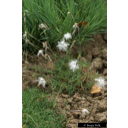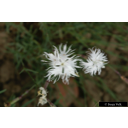Wissenswertes zu diesem Pflanzenindivuduum
Dianthus gratianopolitanus Vill. 1789
Caryophyllaceae
- Nelkengewächse (APG IV)Pfingst-Nelke
Akzessionnummer: StudGart-1966
Pflanzjahr: 0
Taxonkonzept: Zander 2008
Verbreitung: Europa: Britische Inseln, Frankreich und Benelux-Staaten, Mitteleuropa, östliches Mitteleuropa, West-Russland
Größe: 0 (m)Blütezeit: V - VI
Dianthus gratianopolitanus Vill. - Accepted: Dianthus gratianopolitanus Vill. bei Zander 2008; Familie: Caryophyllaceae (Zander 2008)Dianthus gratianopolitanus Vill. - Accepted: Dianthus gratianopolitanus Vill. bei The Plant List (2010); Familie: Caryophyllaceae (APG III)Dianthus gratianopolitanus Vill. - Accepted: Dianthus gratianopolitanus Vill. bei The Plant List (2014), version 1.1; Familie: Caryophyllaceae (APG III)Dianthus gratianopolitanus Vill. - Accepted: Dianthus gratianopolitanus Vill. bei The Plant List (2014), version 1.1; Familie: Caryophyllaceae (APG IV)Dianthus gratianopolitanus Vill. - Accepted: Dianthus gratianopolitanus Vill. bei BfN Checklist Flora DE; Familie: Caryophyllaceae (APG IV)
- Schutzstatus, Rote Liste
- Vom Aussterben bedroht in DE (1)
- Vegetationstypus und Synökologie (Pflanzengesellschaft)
- Ver. Seslerio-Festucion pallentis
- Status der Einbürgerung
- I
Erhardt, W., Götz, E., Bödeker, N. & Seybold, S. (2008): Der große Zander. Enzyklopädie der Pflanzennamen. Band 2. Arten und Sorten. Eugen Ulmer KG, Stuttgart (Hohenheim), 18. Aufl., 2103 S.; The International Plant Names Index (2009). Published on the Internet http://www.ipni.org; Courtesy to IPNI, 2009. Exported from IPNI at date: 2009-09-22 20:17:51;
Diese Webseite verwendet Google Maps, um Karten und Standorte von Pflanzen in den Hohenheimer Gärten anzuzeigen. Dadurch werden unter Umständen Daten an Google weitergeleitet, was mit einer Verarbeitung Ihrer personenbezogenen Daten verbunden sein kann. Die Datenschutzerklärung von Google finden Sie hier: Datenschutzerklärung von Google


